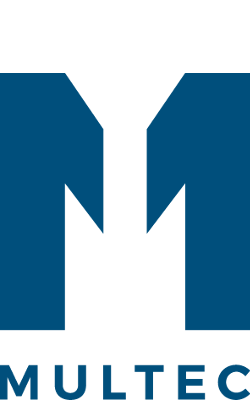Additive Fertigung
Mit der additiven Fertigung ist der schritt- beziehungsweise schichtweise Aufbau eines Produktes gemeint. Im Unterschied zu subtraktiven Verfahren wie Schleifen, Drehen oder Fräsen funktionieren generative Fertigungsverfahren also nicht durch das Wegnehmen von Material, sondern durch einen schichtweisen Aufbau.
Welche Vorteile bringen generative Fertigungsverfahren?
Die additive Fertigung 3D Druck kann im Vergleich zu anderen Herstellungsverfahren in zahlreichen Aspekten überzeugen. So ist eine schnelle Fertigung von dreidimensionalen Mustern, Prototypen oder Kleinserien möglich, ohne dass dafür besondere Formen oder Werkzeuge benötigt werden. Anders als bei den beschriebenen subtraktiven Verfahren ist die additive Fertigung eine sehr nachhaltige Lösung. Da annähernd 100% des Rohmaterials ins entstehende Bauteil einfließen, fällt kein nennenswerter Abfall an.
Gibt es verschiedene Arten additive Fertigung?
In der täglichen Praxis hat die additive Fertigung verschiedene Gesichter. Neben den harzbasierten (SLA) und den pulverbasierten Verfahren (SLS) erweist sich vor allem das filamentbasierte Vorgehen (FFF) als besonders vorteilhaft.
Multec hat sich auf die filamentbasierte additive Fertigung spezialisiert. Diese bietet ein sehr breites Spektrum an Anwendungsmöglichkeiten, während die Investitions- und Rohmaterialkosten überschaubar bleiben. Die filamentbasierte additive Fertigung ist damit äußerst wirtschaftlich. Auch die Handhabung des Filaments ist besonders einfach. Der patentierte Mehrfachdruckkopf 4MOVE leistet dabei einen hohen Beitrag. Die besonders hohen Auflagen in Bezug auf den Arbeitsschutz, wie sie etwa die additive Fertigung mit Harzen oder Pulvern mit sich bringt, spielen hier keine Rolle.
Welche Filamente für die additive Fertigung gibt es von Multec?
Multec bietet Ihnen zahlreiche Filamente für ganz unterschiedliche Anwendungsbereiche:
- FDM-Kunststoffe und Metall
- Hochfeste Kunststoffe für technische Funktionsteile
- Faserverstärktes Filament
- Temperaturbeständiges Filament
- Lebensmittelechtes Filament
- Metalldruck-Filament BASF Ultrafuse 316L
Aus eigener Herstellung für zahlreiche 3D Druck Anwendungen stammen die folgenden Filamente:
- Multec PLA-HT
- Multec Carbon (PA-CF)
- Multec PLA
- Multec PETG
- Multec Smart Support
Multec entwickelt auch weiterhin Filamente für die additive Fertigung, um die Möglichkeiten dieses Fertigungsverfahrens zu erweitern.
Die additive Fertigung im Metallbereich
Die additive Fertigung bietet vielfältige Möglichkeiten, da der im Filament befindliche Kunststoff einen relativ niedrigen Schmelzpunkt aufweist. Das Material kann also problemlos im 3D Druckkopf verflüssigt und zu einem dreidimensionalen Objekt aufgebaut werden. Bei Metall stößt diese Fertigung natürlich an eine Grenze, denn hier liegt der Schmelzpunkt naturgemäß deutlich höher.
Um für die additive Fertigung keine vollkommen anderen, deutlich aufwändigeren Maschinen bauen zu müssen, nimmt Multec einen Umweg. Das genutzte Filament für den Metalldruck besteht zu 90 Gewichtsprozent aus Metallpulver, während die übrigen 10% aus einem Binderpolymer bestehen. Im 3D Druck wird lediglich dieser Kunststoff verflüssigt.
Die zusätzlichen Arbeitsschritte des Entbinderns und Sinterns sind hier unumgänglich. Dennoch ist diese additive Fertigung gegenüber anderen Verfahren deutlich im Vorteil.
Wo kann man Beispiele für die additive Fertigung per 3D Druck finden?
Zahlreiche Branchen wurden durch die Möglichkeiten des 3D Drucks revolutioniert. Dies gilt vor allem für die Bereiche Formenbau, Betriebsmittelbau und Prototypenbau. Früher mussten Modelle beziehungsweise Prototypen meist in mühevoller Handarbeit entstehen, was natürlich hohe Kosten verursachte und zu einem hohen Maß an Ausschuss führte. Der 3D Druck als additive Fertigung spart Kosten, Zeit und Nerven.
Auf unserer Website zeigen wir Ihnen zahlreiche Beispiele, wie der 3D Druck als additive Fertigung auch für Ihren Betrieb neue Möglichkeiten eröffnet.
Bei offenen Fragen oder Wünschen sprechen Sie uns gerne jederzeit an. Die Beratung ist für Sie vollkommen unverbindlich und kostenlos – Kontaktieren Sie uns.
